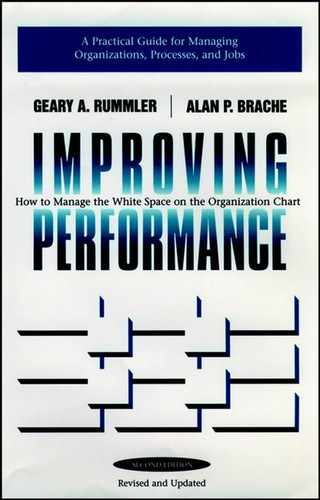2.3. The Organization as an Adaptive System
Our framework is based on the premise that organizations behave as adaptive systems. As Figure 2.4—often called a "super-system map"—shows, an organization is a processing system (1) that converts various resource inputs (2) into product and service outputs (3), which it provides to receiving systems, or markets (4). It also provides financial value, in the form of equity and dividends, to its shareholders (5). The organization is guided by its own internal criteria and feedback (6) but is ultimately driven by the feedback from its market (7). The competition (8) is also drawing on those resources and providing its products and services to the market. This entire business scenario is played out in the social, economic, and political environment (9). Looking inside the organization, we see functions, or subsystems, which exist to convert the various inputs into products or services (10). These internal functions, or departments, have the same systems characteristics as the total organization. Finally, the organization has a control mechanism—management (11)—that interprets and reacts to the internal and external feedback, so that the organization keeps in balance with the external environment. The intelligent use of feedback is at the heart of what has begun to be called the "learning organization" (Senge, 1990).
To illustrate the systems framework, let us examine a fictitious firm: Computec, Inc. As shown in Figure 2.5, Computec (1) is a software development and systems engineering firm. It takes in capital, staff, technology, and materials (2) and produces products and services (3), which include systems consulting services, custom software, and software packages. It sells its products and services to a primary market—aerospace companies—as well as to other industrial and individual markets (4). It also provides financial value to its shareholders (5). Computec has various internal mechanisms for checking the accuracy and efficiency of its coding, reports, and packages (6). Its customers give it feedback (7) through additional business, complaints, references, and requests for service. Its competitors (8) are other software and systems engineering companies that serve Computec's markets. It conducts its business in the context of the American economic, social, and political environment (9). Inside Computec, such functions (10) as marketing, product development, and field operations serve as internal suppliers and customers, which convert the company inputs into the company outputs. The management team (11) establishes the strategy, monitors the internal and external feedback, establishes goals, tracks performance, and allocates resources.
Figure 2.4. An Organization as an Adaptive System.

We contend that this systems perspective describes every organization. Even the systems of monopolies and government entities contain everything, including a modified form of the "competition" (8) component. The markets may change, products and services come and go, but the components of the system remain the same. In fact, the only thing we can say with certainty about the future of an organization (assuming it is still in business) is that the organization will operate in a system that includes the components of the model shown in Figure 2.4. The potential evolution of a business is dramatically illustrated by Primerica, a diversified financial services company, which evolved from American Can, a typical "smokestack America" manufacturer.
Figure 2.5. The Super-System of Computec, Inc.

